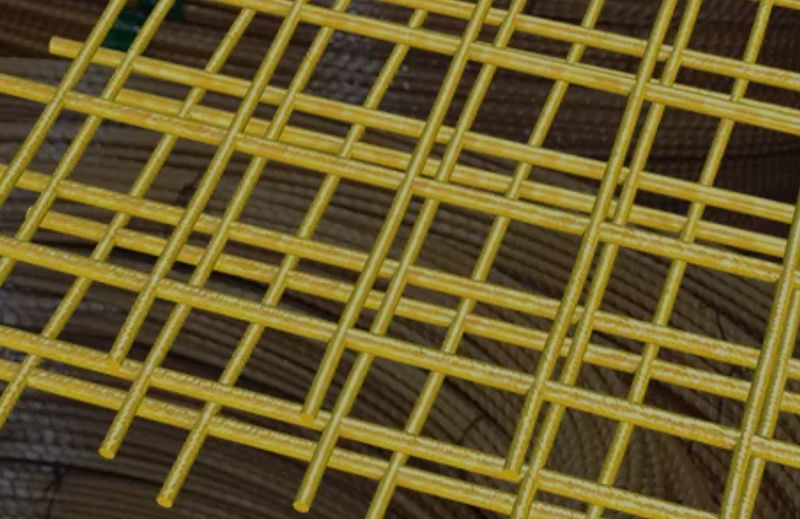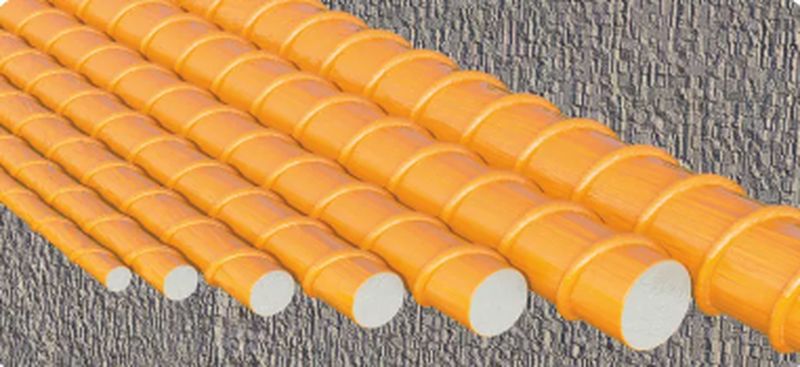In the world of construction and engineering, new and innovative materials continue to develop and come into use to improve the performance of buildings and extend their life. One of these innovations is the use of GFRP (Glass Fiber Reinforced Polymer) rods, which are used as an alternative to the traditional steel rods in the fields of construction and supporting infrastructure. In this article we will discuss the advantages and disadvantages of using GFRP rods.

Advantages of GFRP:
1. Rust resistance: One of the prominent advantages of GFRP rods is their resistance to rust. Unlike steel bars, GFRP does not react to exposure to water, salt or chemicals, making it ideal for use in harsh environmental conditions, such as coastal construction or infrastructure exposed to cooling materials.
2. 2X Stronger than Steel – Glass Fiber Reinforced Polymer (GFRP) is considered to be significantly stronger than conventional materials like steel in certain aspects due to its unique composition and properties.
3. Upto 30% Savings as Compared to TMT Bars – GFRP bars can offer cost savings of up to 30% when compared to traditional TMT bars, making them a cost-effective alternative.
4. No Theft in Transit / Site of TMT Bars – As GFRP Rebars have specific application and no resale value in the open market, they are not prone to theft of TMT bars during transit or theft at site. This will further help reduce project costs.
5. Saving in Overlapping Cost of TMT Bars – GFRP elements do not require overlapping as traditional TMT bars do, resulting in cost savings on materials and labor.
6. Reduction of Rebar Scraps – GFRP bars, mesh, and bent elements are custom-made to precise dimensions, reducing waste and minimizing rebar scraps during construction.
7. Highly Chemical Resistant – GFRP is highly resistant to chemical corrosion, making it ideal for use in aggressive environments or marine structures.
8. 20 Times the Fatigue Resistance of steel – GFRP has 20 times the fatigue resistance of steel, making GFRP more durable under cyclic loading-420, 684 cycles for GRP compare to 23,162 cycles for steel.
9. Suitable for tunneling – The non-conductive and corrosion-resistant properties of GFRP make it well suited for tunneling, where such properties are essential.
10. Light weight – The light weight of GFRP rods, compared to the steel rods, allows easier transfer and installation, which reduces labor costs and allows the use of less advanced lifting means. Upto 80% Lighter than TMT Bars, GFRP bars, mesh, and bent elements are custom-made to precise dimensions, reducing waste and minimizing rebar scraps during construction.
11. Flexibility in design – Since GFRP can be molded into any shape, engineers can produce structures with advanced geometries that are not possible when using metal.
12. Non-conductivity – Since GFRP does not conduct electricity, its use is an advantage in buildings where it is necessary to prevent electric shocks or in power stations where electricity is transferred.
13. Non-magnetic – Since GFRP does not induce a magnetic stirrer, its use is suitable for areas where it is necessary to avoid magnetic effects, such as MRI rooms in hospitals.

PELEDAVIRON LTD is the exclusive representative of the Shri Rathi and Armastek group in Israel
